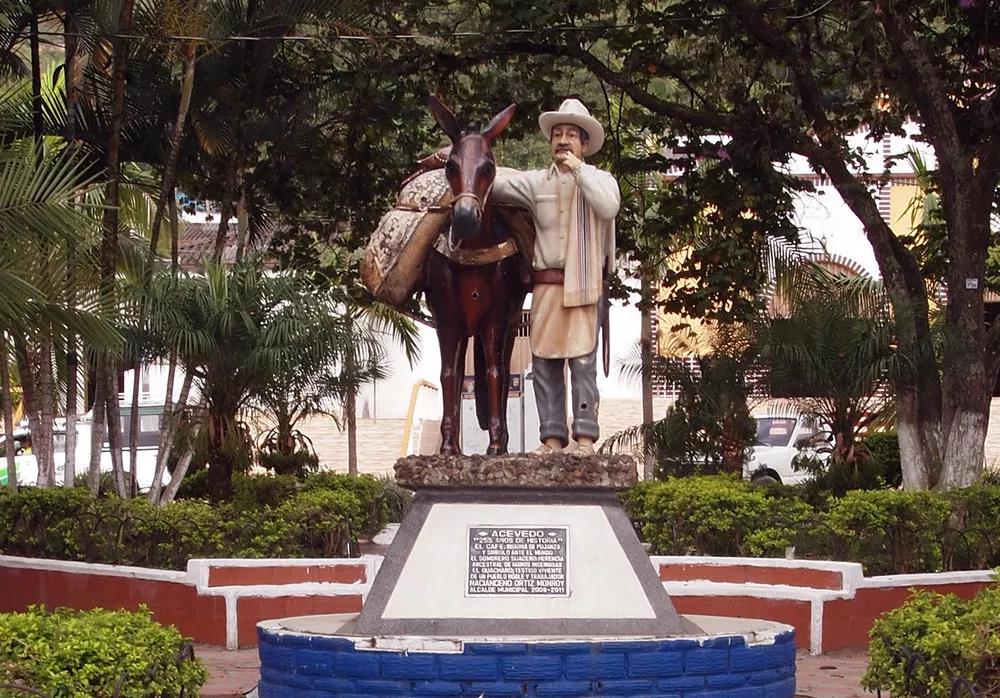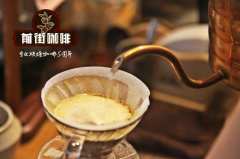The History of Coffee: Colombian Coffee of good quality

Professional coffee knowledge exchange more coffee bean information please follow the coffee workshop (Wechat official account cafe_style)
Coffee was first introduced to Colombia in 1808 when a priest brought it from the French Antilles via Venezuela. Today, the country is the second largest producer after Brazil, with an annual output of 13 million bags of 60 kg each, while Brazil produces 22 million bags. The status of coffee in Colombia is illustrated by the fact that all vehicles entering the country must be sprayed and sterilized so as not to inadvertently cause disease and damage coffee trees.
Colombian coffee is one of the few original coffee sold in the world under the name of the country. In terms of quality, it has won praise unmatched by other coffee. The country is the world's largest exporter of Arabica coffee beans, while Robbins coffee is rarely grown. It is also the world's largest exporter of washed coffee beans (Washed beans). Compared with other producing countries, Colombia is more concerned with developing products and promoting production. It is this, coupled with its superior geographical and climatic conditions, that makes Colombian coffee excellent in quality and delicious and famous all over the world.
The country's coffee-producing areas are located in the foothills of the Andes, where the climate is mild and the air is humid. Colombia has three Cordilleras mountains (sub-mountain system) running north and south, right into the Andes. Coffee is grown along the highlands of these mountains. The mountain steps provide a diverse climate, which means that the whole year is the harvest season, with different kinds of coffee ripening at different times. And fortunately, unlike Brazil, Colombia doesn't have to worry about frost. There are about 2.7 billion coffee trees in Colombia, 66 per cent of them.
It is planted in the plantation in a modern way, and the rest is planted in small, traditionally operated farms.

In the early 1960s, coffee production was about 600kg per hectare. Now it has risen to about 900kg, and some farms can reach 2500 kg. However, quality assurance is a top priority for the coffee industry. Colombia established the National Coffee Management Association (Federacion Nacional de Cafeteros, or FNC) in 1927, which is responsible for quality supervision. Although the association is a private company, it acts on behalf of the government. In addition to organizing the industry, the association is also responsible for raising funds in a bumper harvest year. Coffee prices have tended to fall over the past few years, and the association has almost exhausted its reserves. The National Coffee Management Association is also responsible for health care, education, road construction, hiring planting technicians, conducting investigations, monitoring product quality, directly handling 50 per cent of total exports, and employing marketing personnel. Like Kenya's National Coffee Management Association, it is a model of coffee organization.
Colombian coffee farmers can sell all their products to the Coffee Management Association at an official low price, or to exporters, who may offer a higher price or no bid at all. In fact, the Coffee Management Association (FNC) controls exports to Europe, while coffee to the United States is mainly exported through private exporters. However, all exports are subject to the lowest export price.
Colombia is fortunate to have Atlantic and Pacific ports, which helps to reduce the cost of transporting coffee, which is the only country in South America. The main production areas of Colombia are in the central and eastern mountains. The most important plantations along the central mountains are located in Medellin, Armenia and Manizales, where coffee is of the best quality and high price, characterized by full grains, rich nutrients, rich aromas and moderate acidity. These three regions are referred to as MAM (the initials of the major cities of the three regions). Most of Colombia's top coffee for export comes from MAM. Along the eastern mountains, the two best areas are around Bogot á (Bogota) and north around Bucamanga (Bucaramanga). Bogota coffee is less acidic than Medellin coffee, but the two are of the same quality.

German imports account for 25 per cent of Colombia's total exports, reflecting the country's excellent quality. Coffee grades are divided into Supremo, Excelso and UGQ,Unusual Good Quality. Klauss coffee in the excellent grade is exported to Germany and Europa coffee is exported to Nordic countries. Excellent grade coffee and top coffee can be bought in most coffee shops. The difference between the two professional regulations is that the coffee beans used in top coffee are larger, and the raw materials are taken from newly harvested coffee beans, so it is easier to ensure the quality of the products. Excellent coffee is usually softer and slightly more acidic than top coffee, but both are aromatic coffee with moderate granules and excellent fruit. Colombian coffee is often described as having a silky taste, and of all the coffees, it has the best balance, soft, smooth and ready to drink.
The thorny question facing Colombian coffee growers is whether to replace bourbon coffee with fast-growing and high-yielding Arabica coffee trees. Some people say that the quality will not be as good as it used to be, but others say that in the place where coffee is most suitable for growth, there will not be much difference in quality.
Aware of the value of marketing, Costa Rica created the coffee spokesman Juan Valdez a long time ago, which can be said to be the greatest marketing success. The marketing program, coined by the Columbia Coffee Farmers Association (Federaci ó n Nacional de cafeteros, FNC), coined the terms "Supremo" and "Excelso" to promote coffee, which are related to the size of coffee beans, but not to quality. If you want to buy good coffee, make sure the beans come from a specific area, not just for the size of the coffee beans.

Colombian coffee farmers can sell all their products to the Coffee Management Association at an official low price, or to exporters, who may offer a higher price or no bid at all. In fact, the Coffee Management Association (FNC) controls exports to Europe, while coffee to the United States is mainly exported through private exporters. However, all exports are subject to the lowest export price.
Colombia is fortunate to have Atlantic and Pacific ports, which helps to reduce the cost of transporting coffee, which is the only country in South America. The main production areas of Colombia are in the central and eastern mountains.
The most important plantations along the central mountains are located in Medellin, Armenia and Manizales, where coffee is of the best quality and high price, characterized by full grains, rich nutrients, rich aromas and moderate acidity. These three regions are referred to as MAM (the initials of the major cities of the three regions). Most of Colombia's top coffee for export comes from MAM. Along the eastern mountains, the two best areas are around Bogot á and north around Bucaramanga. Bogota coffee is less acidic than Medellin coffee, but the two are of the same quality.
Colombian coffee has many different flavors, such as thick substance, chocolate, fruit, jam-like sweetness. There are great differences among different producing areas.
Related recommendation: is hand-made coffee really good? Why does coffee smell better than it tastes?
Important Notice :
前街咖啡 FrontStreet Coffee has moved to new addredd:
FrontStreet Coffee Address: 315,Donghua East Road,GuangZhou
Tel:020 38364473
- Prev

Hand coffee is so fresh in literature and art, but it was invented by a housewife.
Professional coffee knowledge exchange more coffee bean information please follow coffee workshop (Wechat official account cafe_style) friends who love hand-brewed coffee, do you know the history of hand-brewing? Although coffee shops have become ubiquitous, how many people know that the modern method of making hand flushing comes from Germany, and the filter cup used by hand flushing was invented by a housewife? From
- Next
Drinking coffee from Chinese porcelain cups to see how world celebrities drink coffee
Professional coffee knowledge exchange more coffee bean information Please follow the coffee workshop (Wechat official account cafe_style) as a drink that makes people all over the world crazy, coffee naturally needs a variety of rumors and interesting stories. Today, let's share some stories about world celebrities and coffee with coffee lovers to see how the masters drink coffee. Modern Western Music
Related
- How did the Salvadoran coffee industry develop in Central America?
- What exactly does the golden cup extraction of coffee mean?
- The Origin of Coffee flower
- [2023 Starbucks World Earth Day] there are more meaningful things besides free Starbucks coffee!
- What kind of coffee is there in Spain? 9 Flavors of Spanish Coffee
- Aromatic African coffee| Kenya's coffee culture and historical production area
- Liberica Coffee Bean knowledge: the characteristics of Liberian Coffee beans of the three original species of Coffee beans
- The origin and formula of Spanish latte introduces the taste characteristics of Bombon coffee in Valencia, Spain.
- How to adjust the solution of over-extracted coffee
- What is the tasting period of coffee beans? What is the period of coffee and beans? How should coffee wake up and raise beans?

